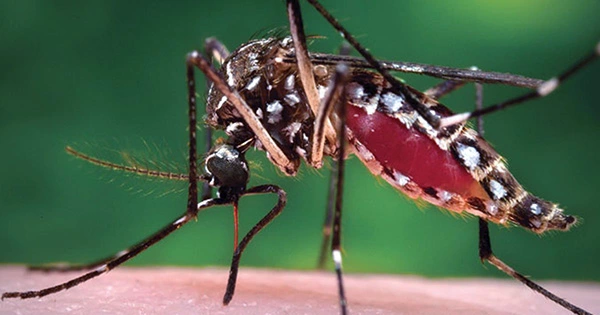Do you know which animal is responsible for the most human deaths each year? Snakes, scorpions, or any of the other apparent candidates aren’t the culprits. It’s not anything semi-unexpected like hippos, and it’s certainly not our fellow humans, so don’t be too cocky. They don’t fly around with little needles full of poison, injecting it into their unsuspecting victims, or anything like that – wait, no, that’s precisely what they do. Mosquitoes’ unrivaled kill rate stems from their proclivity for spreading germs, viruses, and even parasites into our bodies when they come for a taste of our blood.
That’s why, from the dawn of time, mankind have been looking for a foolproof technique to defeat the bugs. Researchers believe they have favorable findings from one of the most cutting-edge techniques out there: genetic editing, following a year-long trial in the Florida Keys. During a webcast on the results, Nathan Rose, head of regulatory affairs at Oxitec, the UK-based biotechnology business behind the experiment, said, “We had quite a few quite a lot of key performance objectives that we were aiming to hit.” “In this experiment, we were able to hit all of those,” he continued.
This isn’t the first experiment aimed at lowering the world’s mosquito issue on a genetic level, and it’s certainly not the first from Oxitec. Researchers engineered male Aedes aegypti mosquitoes to carry a gene that is harmful to female progeny in this newest effort, although each strategy is somewhat different. These Oxitec-reared males are then released into the Florida Keys to mate with wild females (which is, to be fair, a well-established tradition in Florida during spring.)
“Looking at effective mating by male mosquitoes that we released, as well as what occurred to the female progeny of these matings, was a really significant element of this experiment,” Rose added. “And it was here that we confirmed that our mosquitoes’ larvicidal efficiency was 100 percent throughout the project.” Oxitec researchers meticulously collected over 22,000 mosquito eggs from traps and returned them to the lab during the trial. They tested the fluorescence of the larvae that resulted from the genetic mutation, which caused the afflicted mozzies to shine. The scientists followed any that lighted up all the way to maturity.
“Every single fluorescent female larva we observed perished before reaching maturity,” Rose added. “This is exactly what we expected, and it matches what we’ve observed in the field and in the lab in Brazil.” While these findings are encouraging, we’re still a long way from declaring a new wonder weapon against mosquitos over the world. For one thing, the genetic shift isn’t permanent; the study found that after two or three months, mosquito populations no longer possess the fatal gene (around three generations of mosquito offspring.
Furthermore, the trials are unable to determine how effective this strategy is in reducing mosquito populations or preventing the spread of the dangerous illnesses they transmit. The researchers never meant for the experiment to address such issues, therefore it’s not a flaw in the study. According to Thomas Scott, an entomologist at the University of California, Davis, “they won’t be able to undertake a study to establish that it truly has a public-health impact.” “In the Florida Keys, there isn’t enough Aedes-transmitted viral illness.”
Despite this, the Florida Keys Mosquito Control District (FKMCD), a local anti-mosquito organization, is optimistic about the new technology. “Aedes aegypti […] makes up around 4% of our overall mosquito collections, but it’s responsible for 100% of the infections we’ve observed recently [in the Florida Keys],” said FKMCD executive director Andrea Leal during the webinar. “Controlling this insect is quite tough […],” she said. “There is no silver bullet we’re just hoping to [discover] something we can combine with the rest of our control approaches,” says the researcher.
















